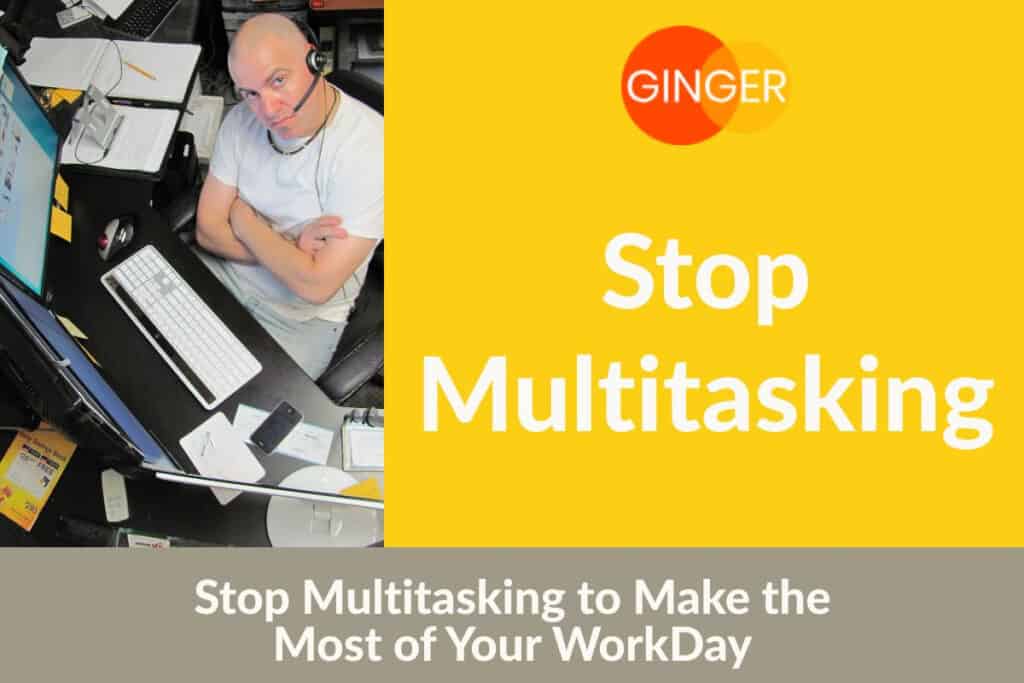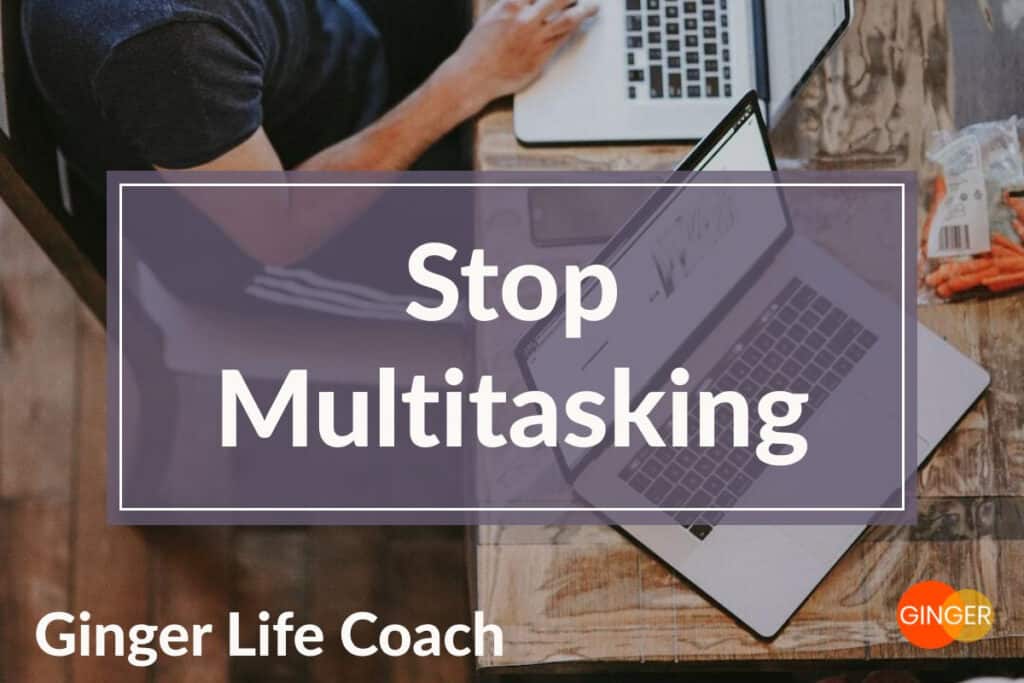Stop Multitasking to Make the Most of Your WorkDay
Do you feel like you’re always running from task to task? Are your days so jam-packed that finishing anything seems impossible? If so, you’re not alone. Instead of spending time wisely, many people spend their days multitasking rather than focusing on one thing at a time. The result is a feeling of inactivity and restlessness, making it difficult to get anything done. This can lead to multitasking. Unfortunately, multitasking isn’t just ineffective; it can harm your productivity and create feelings of anxiety, stress, exhaustion, and frustration in the long run.
Luckily, there are ways to end this cycle and start prioritizing your work again. This article will cover everything you need to know about how multitasking affects your performance and how to shut it down to maximize your workday.
Sometimes you may feel like there are too many things you need to do, and you need more time to do them. It is often more convenient to do multiple things at once. But sometimes multitasking slows you down rather than helping you get things done faster.

How Multitasking Affects Your Workday
Few things are more frustrating than tackling a large workload but feeling at a standstill. This is what happens when you multitask. Instead of switching between tasks, you try doing two or more things simultaneously. Unfortunately, this means that the quality of your work could be better, and you end up feeling overwhelmed for hours of your day.
When trying to tackle a large workload, you need to be able to switch between tasks without getting frustrated or feeling like you need to get somewhere. To maintain focus, you need to be able to focus on one thing at a time. This is why multitasking can have such a harmful effect on your productivity.
Multitasking negatively affects your workday because it takes up more time than just completing one task at a time. As a result, you end up spending hours of your day switching between functions rather than focusing on one thing at a time. This leads to feelings of restlessness and inactivity, impacting your productivity and ability to get things done. This is especially true for busy people who need more time for themselves.
Multitasking also creates stress because switching between tasks quickly and efficiently is challenging. Instead of focusing on one thing at a time, you need to be able to move between jobs without getting distracted. This is a challenge for busy people who are often in high-stress environments and are dealing with challenging demands. You’re doing more harm than good if you try to multitask while managing high-stress levels.
An example of multitasking is taking a work call while trying to drive. It may sound easy, but your brain needs to be focused on going for your safety instead of talking to your boss or co-workers. Focusing on two things at once draws attention away from both tasks. You won’t be able to concentrate on driving as well as you usually would if you weren’t talking on the phone, and you also won’t retain as much information from the call as you would if you gave it your undivided attention.
Why is Multitasking so Challenging?
Multitasking is challenging because it requires you to be able to switch between tasks while also being able to stay focused. Unfortunately, due to the inherent challenges of multitasking, you’re likelier to be less productive than focusing on just one thing at a time. In addition, due to the constant distraction associated with multitasking, you’re also more likely to get distracted and lose focus on the work you’re supposed to be doing. Of course, you can use self-discipline to overcome multitasking challenges, but this only comes naturally to some.
It can be challenging when you need to get used to prioritizing things and finding time to focus on one thing at a time. The more you multitask, the more you struggle with self-discipline. This is why people who are already time-poor (see below) work with it even more. It can be challenging to slow down and prioritize when you have a busy lifestyle and need more time to make it easy for yourself. Multitasking is also tricky because it takes more time than just completing one task at a time.

3 Strategies for Becoming a Better Multitasker
The best way to stop multitasking is to recognize that it takes too much time. Once you identify this, you can start prioritizing your tasks, giving you more time to focus on essential things. Next, you need to practice switching between tasks without getting distracted. This means staying focused while moving between stuff without getting distracted. Last, you must identify where you lose focus and restore it before it’s too late. There are three main strategies you can follow to become a better multitasker:
- It would help if you practiced switching between tasks without getting distracted. This means staying focused while moving between things without getting distracted.
- You must identify where you lose focus and restore it before it’s too late.
- You need to invest in some high-quality multitasking tools.
These will help you break up larger tasks into smaller chunks that are more manageable.
Instead of multitasking, devote your time to something you need to get done and only focus on something else once you’ve completed it. This will help you break your habit of multitasking and ensure you give your all to whatever you’re doing.
Multitasking isn’t just ineffective; it can harm your productivity and create feelings of anxiety, stress, exhaustion, and frustration in the long run. Fortunately, there are ways to end this cycle and start prioritizing your work again.

Multitasking: how it affects your home life
Another example is listening to your child or spouse tell you about their day while working or responding to emails. If you’re trying to work while talking to your family members, you will only be engaged in the conversation as much as you would be if you weren’t multitasking. They’ll notice that you’re not paying attention to them, making them feel like they’re not as important to you as work is. If you stop multitasking, your personal and work life will benefit.
If you focus on doing something for a project, you’ll deliver your best work instead of the subpar work you did while simultaneously focusing on multiple other things.
If you focus on your family, you’ll be able to live in the moment and enjoy your time with them more. Trying to multitask constantly can seem reasonable initially, but it will quickly become stressful, and you won’t benefit.
You’ll become focused on too many things at once and always feel frazzled and unorganized. If you decide to multitask often, you’re taking away from being the best you could be in your work and home life.
In conclusion, multitasking is not the best way to get things done. You can become more productive and organized by focusing on one task at a time. It is essential to take some time out of your day to enjoy moments with your family without having the urge to multitask. Investing in some high-quality multitasking tools allows you to break up larger tasks into smaller, more manageable chunks. Lastly, it is vital to identify when you lose focus and restore it before it’s too late. With these strategies, you can become a better multitasker and maximize your work day.






